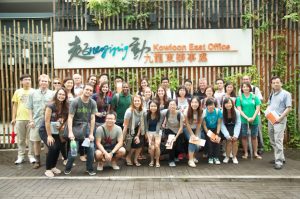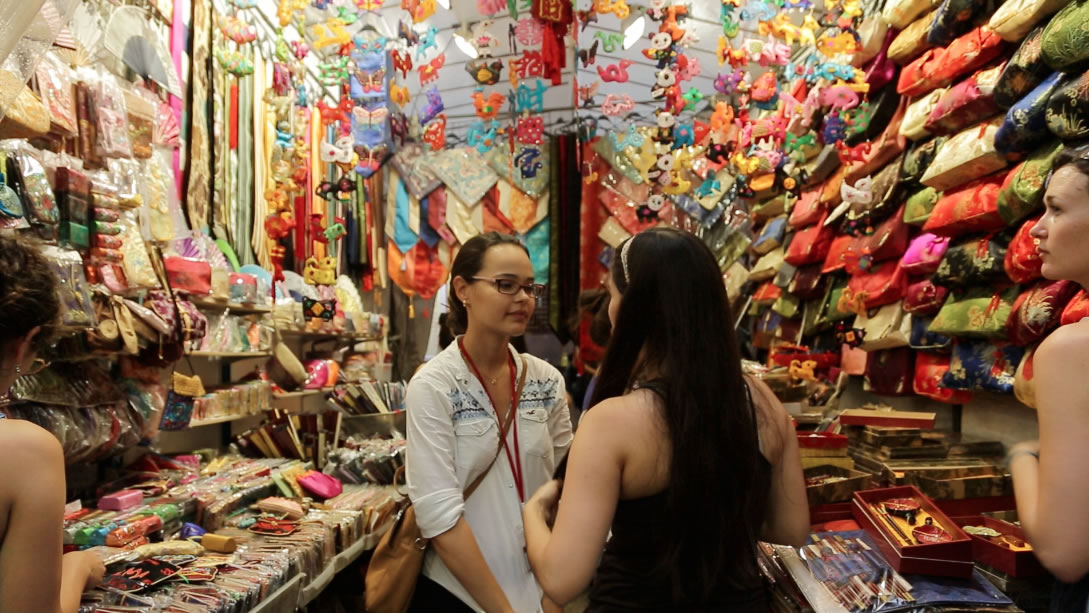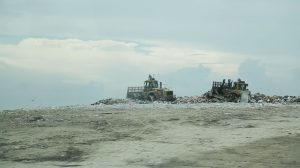
Documenting sustainability solutions: A videographer’s journey in Hong Kong
We’re currently on a bus overlooking one of Hong Kong’s three landfill sites, a hugely impressive (and terribly disgusting) expanse stretching across 110 acres in Nim Wan, Tuen Mun. This isn’t exactly where one hopes to end up on holiday, but this isn’t your average holiday.
I’m here in Hong Kong to document ASU’s study abroad program focusing on urban sustainability, a partnership with the local CityU in Kowloon in which students from both countries are teamed up to research problems facing major cities today, and working to innovate solutions specific to Hong Kong. As a videographer by trade and a marketer by practice, my understanding of sustainability issues is ignorant at best. And after just two days here, it’s blowing my mind how important the work these students are doing truly is.


Hong Kong is the perfect city for this type of learning. I’ve been all around the world—from South America to Europe and the Middle East—and I’ve never seen a city whose geography has such an influence on its infrastructure. Consisting of over 200 jungle-peaked islands jutting out of the sea, along with a chunk of mainland China for good measure, the Hong Kong Special Administrative Region is a jumbled mix of seven million people and breathtaking nature. The people have proven that they can tame the land to their purpose (from filling in the sea to extend their infinite skyline, to suspending some of the world’s largest bridges between islands), but their forward-thinking in city planning led them to set aside 38 percent of the region as protected park areas. Suffice it to say, this is not your typical megalopolis. However, that doesn’t mean the problems facing Hong Kong aren’t your typical problems: water treatment, waste removal and energy efficiency present the same challenges here as they do in Phoenix, albeit in a different context.
What’s blown me away about these students is how intimately invested they are in practicing sustainability. They buy reusable mugs instead of getting a new cup for coffee every morning. They turn the air conditioning off every day when they leave their dorm rooms for class. They even take gently used napkins from the dining hall to use to capacity later on in the day. It’s not just a major to them; it’s a lifestyle.
That personal commitment is the driving force behind their academic pursuit to not just solve the crises facing our world today, but to see ahead and solve the crises of the future. Teams of students from ASU and CityU are working together in six identified areas of sustainability concern (waste disposal, energy, transportation, water supply/wastewater disposal, land use/housing and marine management) to develop poster presentations to be exhibited next Friday in front of local leaders in relevant fields. This isn’t going to be a cutesy show-and-tell, but rather a fiercely academic exhibition targeted at presenting real solutions to real problems. Their research is coming from their own personal readings and findings, as well as information from guest lecturers and local business/government leaders from Hong Kong. I can’t wait to see what they come up with.
But even greater than my excitement to see the final showcase is my humbled appreciation for the work that ASU is doing globally to improve our world. This is a small group in a small corner of the world working on a small project, but they represent the best that ASU has to offer: a true New American University that’s promoting excellence by making a positive social impact.

